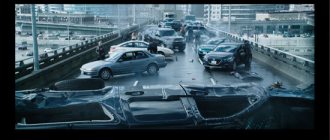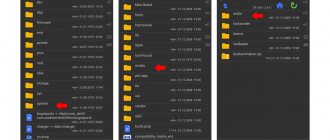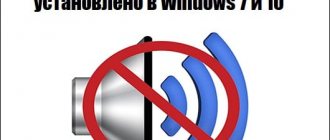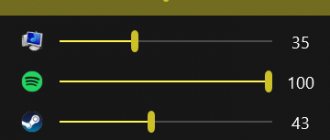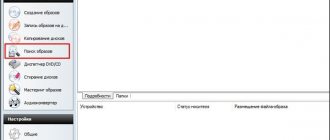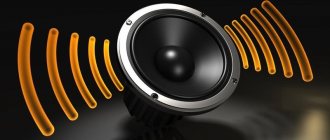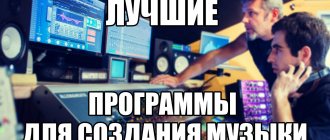A telephone with a voice recorder is not uncommon these days. When communicating with counterparties, friends and family, you may want to make an audio or video recording of the conversation.
How legal is such an action? Is recording possible only using means intended for this purpose? Are the so-called spy gadgets actively offered by foreign online stores acceptable?
What is the right thing to do if the interlocutor is categorically against the explicit recording of a conversation, and when he sees a voice recorder or a switched-on smartphone, he does not want to continue the conversation, is it worth using hidden recording?
In what cases can journalists disseminate hidden footage?
And if the record is obtained in one way or another, how can it be used in the future? Will it be evidence for the court?
We will answer all questions in this article.
What is a hidden recording?
As is often the case, there is no such concept in legislation. But from the phrase it follows that this is a recording that one of the participants in the conversation does not know about. Hidden recording is carried out using technical means and can be photo, video and audio. Notebook entries are not classified as hidden.
As judicial practice shows, it is first necessary to analyze the category of information being recorded, in particular, whether it relates to:
- to trade secrets,
- to personal data,
- to information about private life.
These three categories of information are prohibited from dissemination without consent . Resolving everyday issues with friends, if the details of private life are not discussed, a telephone offer from a bank employee to conclude an agreement is not such.
If you are a participant in the discussion, you have every right to record audio information for further reproduction for personal purposes.
But if a citizen of the Russian Federation comes up with the idea of recording the conversation of strangers, then such actions will already have criminal legal implications. And in the case of transfer of a recorded recording without the consent of the copyright holder to third parties or its distribution on the Internet, the law establishes administrative and civil liability.
Best models
Leading manufacturers of voice recorders are Denpa, Cenix, Philips, Olympus, Sony, Panasonic, Samsung. If we talk about voice recorders for covert recording, the main characteristics here are size, weight, and recording quality.
Digital voice recorders from E-dic are ideal for covert recording.
In addition, the models of these voice recorders have been included in the Guinness Book of Records more than once. The most famous models such as E-dic Tiny Classik, E-dic Tiny Mini, and E-dic Gold are only 10-20 mm in size. And some models can even easily fit on your fingertips.
A special place is occupied by such a model as E-dic Gold. This voice recorder has a very durable metal body. Weight – 13 grams. Recording time – 299 hours. Despite the fact that the device only has one button, it has quite a lot of functions (voice activation, USB connector, external microphone).
Models of voice recorders for covert recording can be made in the form of various everyday objects. It could be a pen, a flash drive, or even a wristwatch.
Using hidden recording in court
Recording conversations for the purpose of further use in legal proceedings is not a useless activity, but it is not effective enough. In December 2020, the Supreme Court of the Russian Federation accepted audio recording as evidence.
Consequently, the records have meaning, but they must be obtained legally, they must clearly and unambiguously indicate the personalization of the interlocutors, the date of the negotiations and other facts relevant to the case. However, discussion of personal data is strongly discouraged.
Prices
If we talk about prices for voice recorders for covert recording, it is worth noting that the cheapest options may not be suitable. But, as always, be guided by the purpose of using this device. For example, Edic-mini Tiny 16 A52-300h will cost between 9-10 thousand rubles. And the Edic-mini Led S51-300h model, made in the form of a wristwatch, will cost about 12 thousand rubles. There are also more expensive models, for example, the Edic-mini Tiny 16 A405-1200h in the form of a small keychain costs about 14-15 thousand rubles.
Voice recorders are becoming more and more popular every day, and their use is often necessary in everyday life. The range of these devices is also very wide, so to choose the model that is right for you, proceed from the purpose of your purchase and the functions you need.
Hidden recording using special means and punishment for it
Popular online stores offer many “spy gadgets” in which an audio and video recording device is disguised as an innocent pen, flashlight and other small items. Is it possible to secretly obtain information using such technical means?
Article 138.1 of the Criminal Code of the Russian Federation establishes that the illegal production, acquisition and (or) sale of special technical means intended for secretly obtaining information are criminally punishable. It is emphasized that the functions of secretly obtaining information or accessing it without the knowledge of the owner must be intentionally included in such technical means.
The sanctions for such crimes are different:
- A fine of up to 200 thousand rubles.
- Imprisonment for up to four years.
- Prohibition to hold certain positions or conduct certain activities for a period of up to three years.
- Combination of the second and third options.
The mechanism for holding someone accountable under this article is quite simple: at customs they identify a parcel with a gadget, put it under special control, after which the customer is caught red-handed when receiving the goods at the post office.
After the adoption of Article 138.1 of the Criminal Code of the Russian Federation in 2011, contradictory judicial practice developed, punishing citizens for the very fact of purchasing devices with the function of secretly obtaining information, or accessing it without the knowledge of its owner. From the point of view of the information owner and the state, such an article in the Criminal Code is justified, but in the practice of its application there are excesses.
Thus, in 2014, a resident of the Voronezh region, citizen G., was convicted under this article because she bought a pen with audio and video recording function on one of the Internet sites to spy on her husband.
An even more amusing incident occurred in 2020 in the Kurgan region with citizen V., who was held accountable under this article for purchasing a tracking device for his own cow.
It’s funny and sad, but a fact is a fact ─ Art. 138.1 of the Criminal Code of the Russian Federation needs to be improved. And before determining the final position of the Law, one must be guided by the resolution of the Plenum of the Supreme Court of the Russian Federation dated December 25, 2020, which permitted the acquisition of relevant technical equipment exclusively for personal purposes.
When can journalists publish hidden footage?
As a general rule, the distribution of hidden recordings by journalists is a violation. However, in accordance with Article 50 of the Law of the Russian Federation “On the Mass Media”, in some cases the media can “bring to light” messages and materials prepared using hidden audio and video recordings, filming and photography.
Dissemination of information is permitted:
1. When it does not violate the constitutional rights and freedom of man and citizen. First of all, inviolability of private life, which is guaranteed by the Constitution of the Russian Federation, including the right to an image, which is its element.
2. When it is necessary to protect public interests and take measures against possible identification of unauthorized persons. Public interest is not just any interest of the audience, but something that concerns the entire society, for example, a threat to public safety or the environment. Therefore, the editor-in-chief of the media, who makes decisions on the publication of a hidden recording, needs to assess the presence/absence of public interest so that in court he can justify the legality of publishing the recordings.
3. When the recording is shown by court order. Everything is clear here: if the court, by its decision, obliges the distribution of a hidden recording, then this will not be a violation.
Hidden recording
Let us recall that the Law on Mass Media requires a journalist to obtain consent to disseminate information about a citizen’s personal life from himself or his legal representatives. However, it is not prohibited, for example, their collection or storage. This inconsistency was probably deliberately introduced to allow covert recording. Hidden recording usually means a secret (inconspicuous, non-obvious) recording, using technical means, of the action (inaction) of a person who is not aware of its production.
Article 50 (“Hidden Recording”) of the Media Law does not prohibit making hidden audio and video recordings or storing the resulting film and photography. But in full accordance with Article 49 (“Duties of a Journalist”) of the same Law, it prohibits the dissemination (display) of this hidden recording, with the exception of three cases.
The first case is if it does not violate the constitutional rights and freedoms of man and citizen. Taking into account the above-mentioned provisions of Articles 23 and 24 of the Constitution of the Russian Federation, in almost any case of unauthorized intrusion into a person’s private life, we can speak of a violation of his constitutional rights. At the same time, the above-mentioned provision of Article 49 of the Law on Mass Media is actually duplicated .
The second case is if it is necessary to protect public interests and measures have been taken against the possible identification of unauthorized persons. We talked about the protection of public interests above, also in relation to Article 49 (note that in all other articles of the Law on the Media there is no mention of public interest).
The need to take measures against the possible identification of unauthorized persons means that when disseminating information obtained in a hidden way, it is necessary to prevent, by visual and audio means, the possibility of recognizing people who are in the frame by chance or whose identification is not necessary to protect public interests. These remedies are known to everyone, they can often be seen on TV: a person’s eyes covered with a black stripe; darkening of the silhouette or distortion of the voice, etc. If a journalist believes that there is a need to protect public interests in showing a certain hidden recording, this does not mean that as a result of such a showing, those people who ended up at the shooting location completely by accident and do not want to be included in the frame should end up in the frame. And of course, viewers should not get the impression that the showing of these people is connected with the need to protect public interests.
Sometimes darkening the face may not be enough. The most interesting example of this occurred in a Siberian city, where a local television company filmed, including with a hidden camera, in a maternity hospital to report on the state of medical care for women in labor. Women were filmed only with their consent, and measures were taken to ensure that those who did not want to be shown on television could not be identified. But a month or a month and a half after viewers saw the report, a lawsuit was filed against the television company. One of the patients claimed that she did not give her consent to the dissemination of footage allowing her to be identified. The television company, in turn, claimed that it had taken all necessary measures to make it impossible to identify the plaintiff: she was shown from behind. During the trial in court, it turned out that the frame included a part of her naked back with a characteristic mole, by which, as the patient herself claimed, she could be recognized by at least half of the male population of the city. The plaintiff did not want anyone to know about her stay in the maternity hospital. On this basis, she claimed illegal disclosure of facts about her personal life in a television report and demanded compensation for moral damage. Although in this case the court decided that there was no violation of this woman’s rights by the television company, it is easy to imagine a situation in which another court would have agreed with the claim and ruled that sufficient measures had not been taken to prevent identification. It is therefore extremely important for journalists to take this issue seriously.
The second paragraph of Article 50 of the Law on the Media is directly related to, perhaps, the most high-profile cases related to the violation of privacy in our country and the issue of protecting public interests. This is a demonstration on television of footage of a hidden recording of the Minister of Justice in the company of dubious characters in a bathhouse and footage depicting a man similar to the Prosecutor General with prostitutes. To what extent did the protection of public interests allow interference in the private lives of these officials? On the one hand, an official has the right to do whatever he wants during non-working hours, in a family or non-family environment, and it is not the job of journalists to intrude - covertly or openly - into his personal life. But, on the other hand, if an official is engaged in something unseemly during non-working hours, then this fact can also affect his public life, and therefore, it is already a fact of his public activity. For example, such a fact can be used by the shadow world, criminal circles, in order to put pressure on this official.
Finally, the third case when dissemination of a hidden recording may be permitted is if its demonstration is carried out by court decision. This rather rare case, although it is mentioned in the Law on Mass Media, has practically no relation to journalism. In principle, this could occur if the judge learns that the television company has hidden camera footage, possibly showing the circumstances of the crime. For example, when, while filming a particular story, someone accused of theft accidentally gets into the frame: let’s say, journalists are filming a street scene, and at that moment someone pulls out a passerby’s wallet. The court has the right to demand that these images be shown in the courtroom if a criminal case related to this particular incident has been initiated.
Popular are television programs that are entirely based on the demonstration of hidden recordings. It should be noted that a person who was unwittingly filmed in a funny and absurd situation should always be asked for permission (after filming, of course) to show this story on television. As a rule, journalists receive such permission, but in order to avoid conflicts in the future, it is advisable to immediately record this permission on film alongside the footage of the prank.
You should also pay attention to the fact that hidden audio recording and recording of someone else's telephone conversation are not the same thing. In the second case, there is a violation of the confidentiality of communications, which is a criminal offense.
▲
